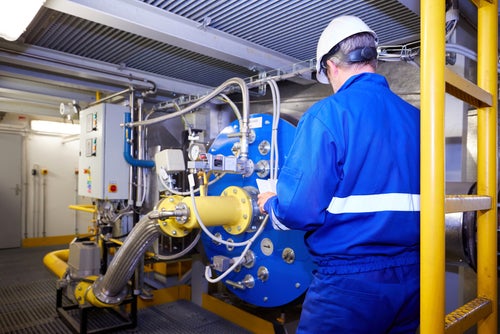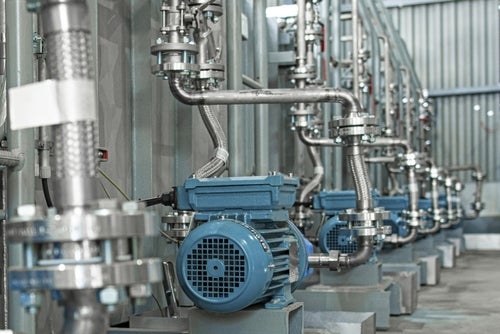The step-by-step approach described in this article is designed to help plants adopt AI effectively for management of electrical equipment assets
Chemical plants must balance high production demands with strict safety standards and tight margins. Equipment failures are more than inconveniences; they can interrupt entire processes, reduce output, compromise worker safety, and may have environmental impact. Traditional maintenance practices such as reactive or strictly scheduled service are no longer enough to keep pace with today’s complex operations.
As facilities become more automated and energy requirements increase, predictive maintenance is becoming an essential approach. By using artificial intelligence (AI) to analyze performance data, engineers gain the ability to spot small warning signs in electrical assets before they turn into major failures. The result is improved reliability, greater efficiency and safety, and a measurable reduction in unplanned downtime.

Artificial intelligence can supplement regular maintenance practices and empower a much more proactive approach to better avoid equipment failure (image source: Shutterstock)
Why Predictive Maintenance Matters
Production in chemical plants depends on a web of pumps, compressors, motors and drives that often run around the clock. Any single failure can ripple through the system, leading to lost production hours, lost product, costly energy waste, and most importantly, concerns about the safety of employees and the surrounding communities. In the past, plants relied on reactive maintenance, fixing equipment only after breakdown, or preventive maintenance, where service was performed on a set schedule regardless of equipment condition.
Predictive maintenance represents the next step in this evolution. By monitoring real-time data and identifying patterns of wear or inefficiency, engineers can take action when it is truly needed. This approach reduces unnecessary service, prevents unexpected stoppages, and extends the useful life of critical equipment. For chemical processors facing rising energy costs and pressure to maximize uptime, the benefits are significant.
How AI Adds Value
The challenge with predictive maintenance has always been interpreting large amounts of data. Sensors can measure vibration, temperature, and electrical current, but without advanced analysis these numbers are difficult to translate into action. AI addresses this problem by detecting patterns and subtle anomalies that would be impossible for humans to spot consistently.
In electrical assets such as motors and drives, AI-based monitoring can uncover early warning signs such as shifts in current draw, irregular harmonics or changes in power quality that point to developing faults. These insights allow maintenance teams to intervene long before equipment failure occurs.
Key advantages include:
- Early identification of performance changes in electrical assets
- Maintenance plans that reflect actual equipment condition rather than fixed schedules
- Better allocation of spare parts and labor
- Reduced safety risks from sudden electrical failures
- Validation that maintenance and repairs addresses root cause of failures

Process systems that depend on electrical assets, such as motor-driven pumps and compressors, can benefit greatly from AI-based monitoring systems that can effectively identify process anomalies before failures occur (image source: Shutterstock)
Getting Started in Chemical Plants
Moving to predictive maintenance is as much about process and culture as it is about technology. A step-by-step approach helps plants adopt AI effectively.
- Identify high-priority assets. Start with the equipment that has the greatest impact on safety or production. Motors driving critical pumps or compressors are often the best candidates.
- Connect with existing systems. Feeding monitoring data into the plant’s historian or distributed control system ensures that insights are visible to operators and engineers in real time.
- Establish baseline conditions. AI models need a picture of normal operations to detect what is unusual. Recording baseline performance makes it possible to highlight small but important deviations.
- Focus on quality data. Adding more sensors is not always the solution. Data that is accurate, calibrated, and relevant to failure modes is more valuable than high volumes of information.
- Train teams to act on insights. Predictive tools are most effective when engineers and technicians understand how to respond. Clear protocols and regular training sessions help turn alerts into timely interventions.
Challenges Along the Way
Adopting predictive maintenance does present hurdles. Plants must be prepared to handle large streams of data, develop staff confidence in AI recommendations, and budget for new sensors and analysis tools. A phased rollout helps address these issues by showing value early and building organizational support.
The Road Ahead
Chemical processing facilities are under growing pressure to operate reliably, sustainably, and with tighter safety regulations. AI-based predictive maintenance provides a way to meet those demands by catching problems before they escalate, optimizing maintenance resources, and safeguarding critical assets.
As the industry continues to evolve, predictive strategies will become integral to everyday engineering practice. Plants that embrace this approach position themselves not only to reduce downtime but also to operate more safely and efficiently in an increasingly competitive environment. ♦
Edited by Mary Page Bailey
Author
Larry Brooks is a seasoned quality engineer at Volta Insite, bringing over 20 years of ex perience in Quality, Manufacturing, and R&D. He holds a B.S.Ch.E. from Youngstown State University. Throughout his career, Brooks has excelled in implementing, managing, and maintaining industry-leading quality management systems, including ISO 9001, ISO 17025, and AS 9100. He holds a Lean Six Sigma Green Belt certification and has received extensive training in quality systems auditing and root cause analysis problem-solving.
perience in Quality, Manufacturing, and R&D. He holds a B.S.Ch.E. from Youngstown State University. Throughout his career, Brooks has excelled in implementing, managing, and maintaining industry-leading quality management systems, including ISO 9001, ISO 17025, and AS 9100. He holds a Lean Six Sigma Green Belt certification and has received extensive training in quality systems auditing and root cause analysis problem-solving.